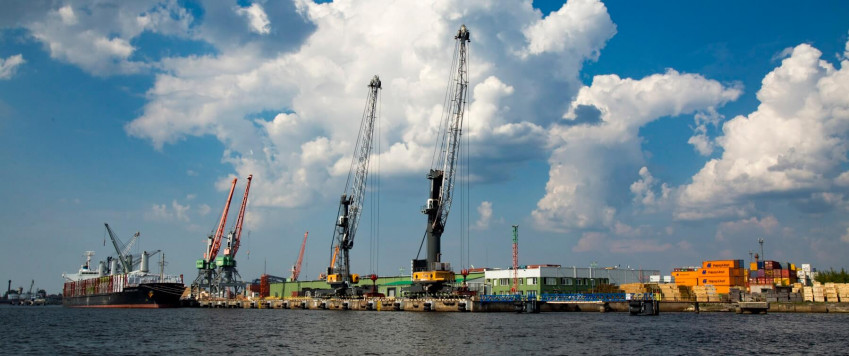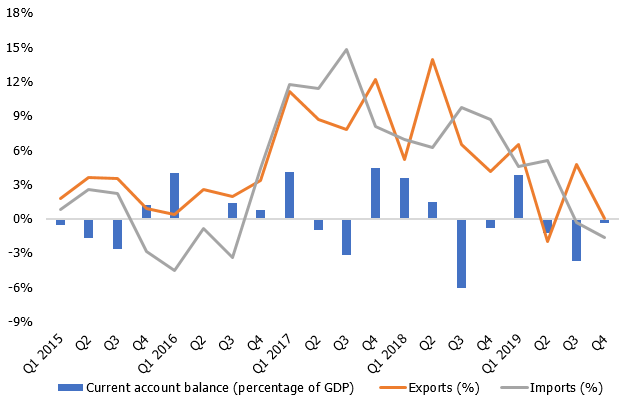Current account deficit stood at 0.3% of GDP in the fourth quarter of 2019

Weakening of the external demand towards the close of the year was mostly felt by exporters of goods: in the fourth quarter of 2019, the overall value of Latvian exports stagnated year-on-year, with more accelerated growth observed in selected groups of services offsetting the fall seen in exports of goods.
Imports declined in response to developments on the exports side: this resulted in a surplus in the goods and services balance in the amount of 1.0% of GDP. However, as foreign investor earnings remained high, the deficit registered in income accounts (1.4% of GDP) swayed the current account to a deficit in the amount of 28 million euro or 0.3% of GDP.
Current account deficit totalled 163 million euro or 0.5% of GDP in 2019.
Weakening of the external demand continued to weigh on exports of goods in the fourth quarter of 2019, experiencing a fall in both their unit value and volume. Like in the previous quarter, the most pronounced falls in export value continued in the commodity groups of base metals, mechanical appliances and wood, while exports of agricultural products continued on an unexpectedly positive trend. As to the fall in the value of imports of goods, it was largely a response to developments on the exports side: manufacturing of export goods slowed down and investment decisions were postponed, therefore imports of intermediate and capital goods declined.
Despite the external uncertainties, the services export growth remained high in the fourth quarter of 2019, standing at 7.7% year-on-year; however, this does not fully capture the whole picture. First, the increase mostly resulted from a rise in export value in the groups of construction and business services. Second, while exports of transportation services by road provided a large contribution to the increase, the entire transport sector is undergoing changes: with the transit-related cargo contracting, the value of transportation services by sea and by rail has also decreased as anticipated; hence, the overall value of transportation services has recorded a minor increase, i.e. 1.2% over the fourth quarter of 2018. Furthermore, the value of exports of financial services has continued on a downward trend: following the structural changes in the banking sector, the export potential of the restructured financial sector is still unclear. Exports of information and communication technology services, having posted accelerated growth before, is also slowing down on account of a drop in the telecommunications export value.
Current account balance, exports, imports

In the fourth quarter of 2019, income account deficit was attributable to foreign investor income in Latvia, partly paid in dividends to the investor and partly kept as reinvested earnings in the companies in Latvia. These and other outflows were not offset by the inflows from the European Union (EU) funds and positive balance of personal transfers.
In the fourth quarter of 2019, the largest financial flows in the financial account of the balance of payments were related to the reserve management of Latvijas Banka and participation in Eurosystem monetary policy operations, as well as foreign direct investment, including reinvested earnings. Overall, foreign direct investment reached 198 million euro (2.5% of GDP) in Latvia in the fourth quarter. The largest inflows were registered from Sweden, Estonia, and Czechia in sectors like real estate activities, energy, information and communication technologies, as well as the financial sector.
Textual error
«… …»


